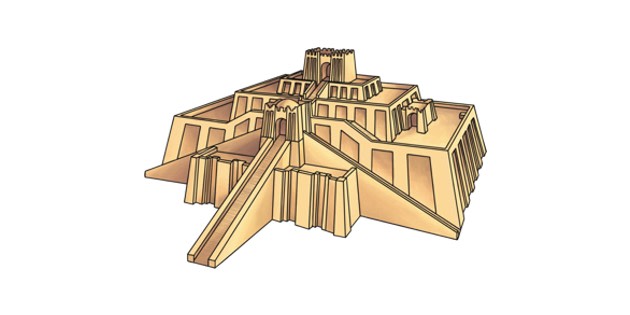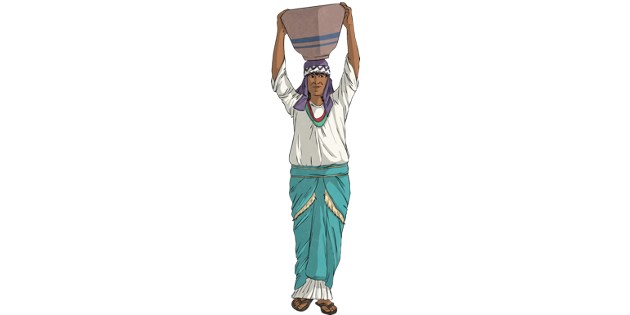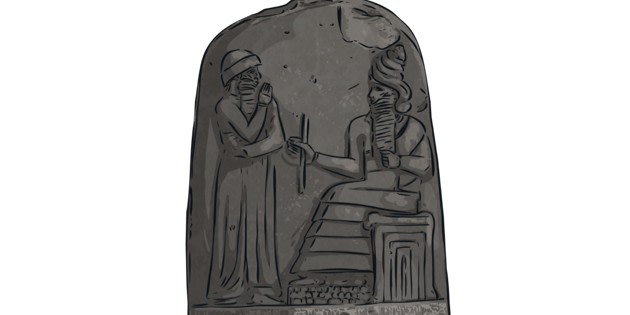



Babylonia, commonly known as the Babylonian Empire, was a city-state in ancient Mesopotamia over 3,000 years ago! Its capital city was Babylon, which translated to ‘The Gate of the Gods’. The people of Babylonia built an empire out of the lands from the former Akkadian empire.
Mesopotamia means ‘land between rivers’. The ancient civilisation of Mesopotamia developed between the Tigris and Euphrates rivers. It was one of the main civilisations of the ancient world!
The development of Babylon as one of ancient Mesopotamia’s key cities, was largely thanks to two kings – King Hammurabi and King Nebuchadnezzar II.

Babylon was located about 50 miles south of modern-day Baghdad, the capital of present-day Iraq.

Throughout his reign, which lasted from 1792 to 1759 BC, King Hammurabi implemented many changes to improve Babylon. He was responsible for transforming Babylon from a small town to a capital city. He improved the defences of the city by strengthening the city walls. Hammurabi also improved the city’s watering system and built new temples.
King Hammurabi is famous for creating the Code of Hammurabi, which was once considered the oldest set of laws in human history. He is represented on the slab in which the code was inscribed.

Looking at the picture above, you might think the figure on the right, who seems to be sitting on a throne, is King Hammurabi. However, that’s actually a figure known as Shamash, the Sun God. He was believed to have handed over the laws to Hammurabi.
The Code of Hammurabi
The Code of Hammurabi contains 282 laws written in cuneiform script, a wedge-shaped writing.
Cuneiform script was discovered in the late 19th century and transformed our understanding of history. Before this discovery, it was thought that the Bible was the oldest book of the world.
A translator called George Smith published his translation of a tablet that contained ‘The Epic of Gilgamesh’, which in turn allowed other cuneiform tablets to be translated. Cuneiform script was first developed by the Sumerians, another group of peoples of ancient Mesopotamia.

Despite the success of King Hammurabi’s reign, by the 6th century BC, Babylon had fallen into disrepair. The city had been damaged in fights between different peoples who wanted to control Mesopotamia, and a lot of the improvements carried out by King Hammurabi were not visible any more.
Fortunately, when King Nebuchadnezzar II came to reign, he rebuilt Babylon. For this reason, his period of reign was known as the Neo-Babylonian Empire. He ruled from 605 to 561 BC.
Much like King Hammurabi, he thought it was important to protect the city from possible invaders. So, he rebuilt the massive walls of the city.
He also built new temples and restored the old ones that had been damaged from previous attacks.
In fact, the beautiful Ishtar Gate that we can still see today was constructed under King Nebuchadnezzar II’s reign, as well as an enormous palace that included the Hanging Gardens of Babylon.

It is said that King Nebuchadnezzar II commanded the construction of the Hanging Gardens of Babylon around 600 BC to gift to his wife, Queen Amytis. The story goes that she missed the mountains and flowers of her homeland.
The Hanging Gardens of Babylon are one of the Seven Ancient Wonders of the World, celebrated for its incredible beauty. One Greek author wrote about the Gardens, described it as a structure made of mud bricks, measuring 400 feet wide and 75 feet high, resting on heavy foundations of natural stone. There were breathtaking waterfalls falling from floor to floor and lots of different kinds of trees, shrubs and flowers.
The Gardens are considered a feat of engineering, by many, especially taking into account how dry the area around Babylon was. The desert-like place would not have been the most habitable place for lush greenery. Despite this, it is said to have been a sanctuary of green trees, shrubs and vines – a quite extraordinary achievement for sure!
Actual proof of their existence is limited, while the lush Gardens are documented by Greek historians, there is no trace of the mysterious creation.
Did the Hanging Gardens of Babylon really exist?
Perhaps we have found no trace of the Gardens, because they were apparently destroyed by earthquake in the first century AD. It is also possible, however, that these mysterious Gardens were purely mythical and never actually existed. No Babylonian texts mention them and no archaeological remains have been found.
Some researchers think that the Gardens may actually have been in Nineveh, which was another important city in Mesopotamia, while others claim that the Greek authors, who compiled the list of the ancient Seven Wonders of the World, may have been fantasising about the royal palace in Babylon.
Less than a century after its founding, in 539 BC, Babylon was conquered by a man named Cyrus the Great, the Persian king. Babylon had officially fallen, once the empire came under Persian control.
Looking for fun ways to teach kids about the ancient city of Babylon and its history? Check out some of our lovely teaching resources that cover the topics mentioned in this wiki, to spruce up your lessons and engage young learners.
Below are just a selection of the kinds of learning materials you can add to your arsenal. So, take the stress out of lesson planning and download the following resources:
All Twinkl resources are teacher-made and designed by our talented team of designers! That means anything you download will be super useful, reliable and engaging. Perfect for supporting your teaching on a huge range of topics.
To get started, simply click ‘Download Now’ and these lovely resources will be saved straight onto your device. Then, you can use them however you like! Not yet subscribed? Click here to learn more.
When you’ve finished reading this brilliant Teaching Wiki, check out the Twinkl video below to find out more about the world’s wonders! In this video, Twinkl Teacher, James, shares some of the brilliant Seven Wonders of the World resources from the Twinkl website.